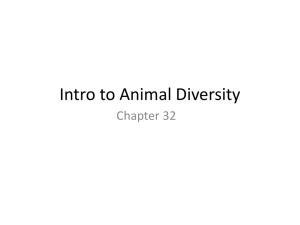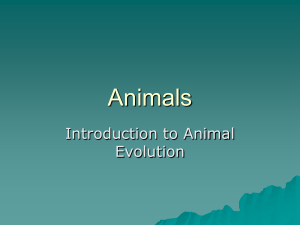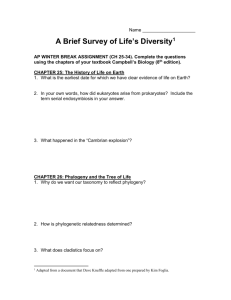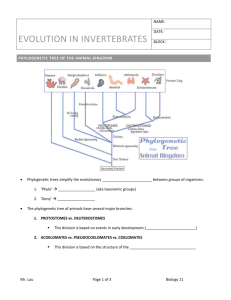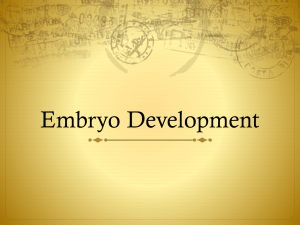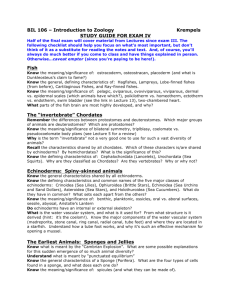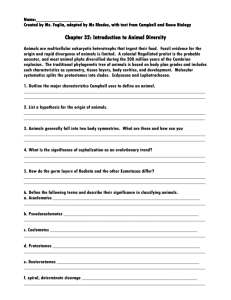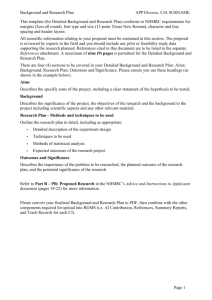Chapters 32 - 34 Invertebrates & Vertebrates
advertisement
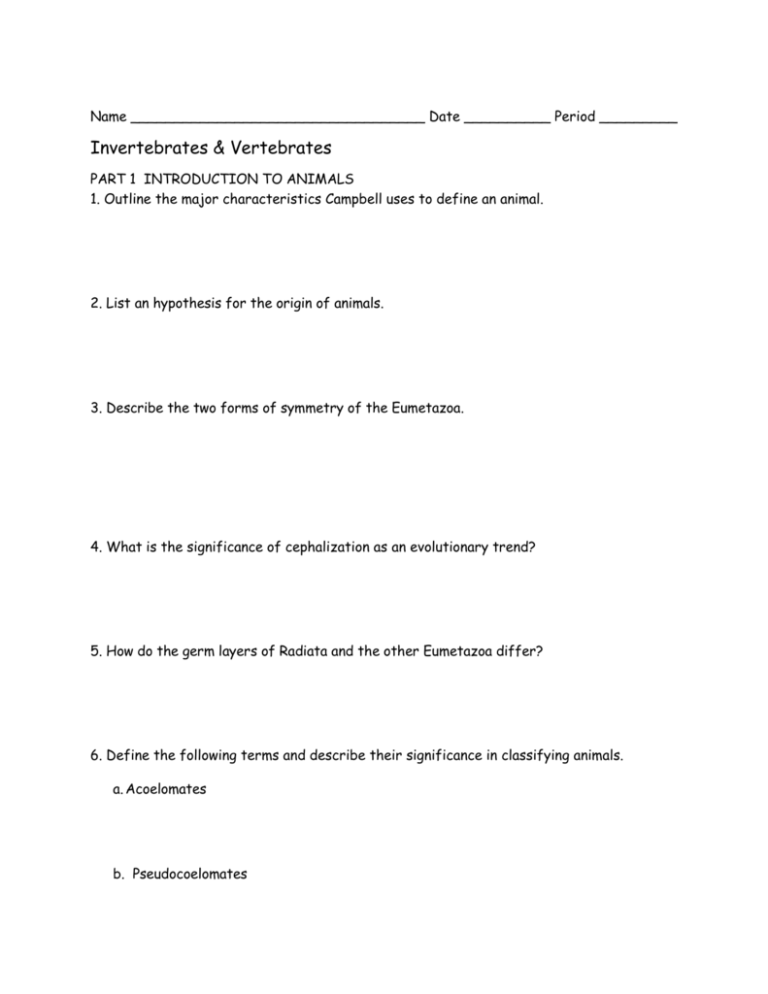
Name __________________________________ Date __________ Period _________ Invertebrates & Vertebrates PART 1 INTRODUCTION TO ANIMALS 1. Outline the major characteristics Campbell uses to define an animal. 2. List an hypothesis for the origin of animals. 3. Describe the two forms of symmetry of the Eumetazoa. 4. What is the significance of cephalization as an evolutionary trend? 5. How do the germ layers of Radiata and the other Eumetazoa differ? 6. Define the following terms and describe their significance in classifying animals. a. Acoelomates b. Pseudocoelomates c. Coelomates d. Protostomes e. Deuterostomes f. spiral, determinate cleavage g. radial, indeterminate cleavage h. blastopore 7. List a number of the major differences between the Protostomes and Deuterostomes. 8. Label the stages of early embryonic development of animal. Using the figure below and the information in the text, outline the key characteristics of each branch of the Kingdom Animalia identified on the diagram. Use definitions from Question 6 to supply the details in your chart. Include examples of organisms in each division. DIVISION 1 2 3 4 5 6 7 CHARACTERISTICS EXAMPLE DIVISION 8 9 10 11 12 13 14 15 CHARACTERISTICS EXAMPLE PART 2 INVERTEBRATES 1. How does the structure of a sponge relate to its method of nutrition? 2. What is a unique characteristic common to the Cnidarians? 3. What are the two forms of shape within the Cnidarians? 4. What are some evolutionary advancements we see in the Platyhelminthes? 5. In what way are Platyhelminthes significant to humans? 6. Define parthenogenesis. 7. What is unique in the structure and function of the Psedocoelomates? 8. List ways in which Nematodes impact humans. 9. List common examples that could be classified as Coelomate Protostomes. 10. What are the three major body regions of a Mollusk? 11. Why do zoologists debate the relationship of Mollusks and Annelids? 12. What is the evolutionary significance of the coelom as seen in the Annelids? 13. What is the importance of segmentation? 14. Why are the Arthropoda regarded as the most successful of all animal phyla? 15. Identify a characteristic that was most significant to Arthropod success. 16. List common examples that could be classified as Coelomate Deuterostomes. 17. What traits are particularly unique to the Echinoderms? Using the Table below and the information in the text, label the phylogenetic diagram of animals with significant characteristics that distinguish major branches. CHORDATES AND VERTEBRATES 1. What are the four characteristics of the Chordates? 2. List and describe an example of an invertebrate chordate. 3. Define paedogenesis. 4. What characterizes the subphylum Vertebrata? 5. In the evolution of vertebrates, identify the significance of being tetrapod? 6. Identify the significance of the amniotic egg and the amniote? Using the table below and the information in the text, outline the key characteristics that distinguish the major branches of the subphylum Vertebrata identified on the diagram. Include examples of organisms in each class. 1 8 2 7 3 4 6 5 CLASS 1 2 3 4 5 6 7 8 CHARACTERISTICS EXAMPLE
